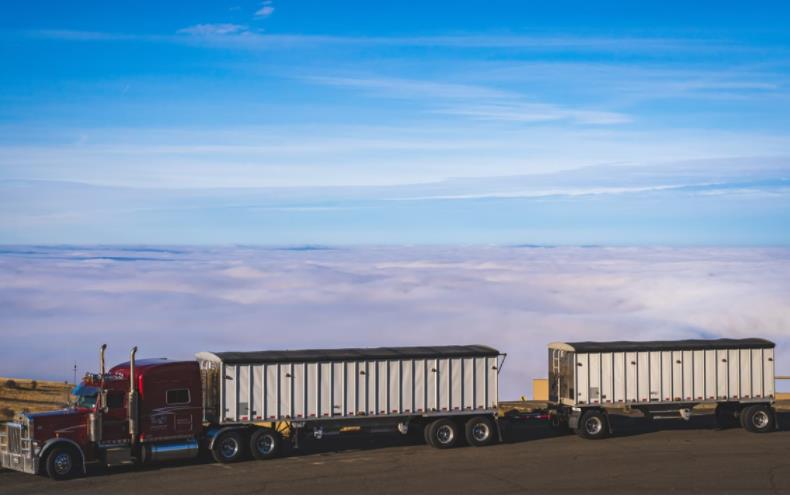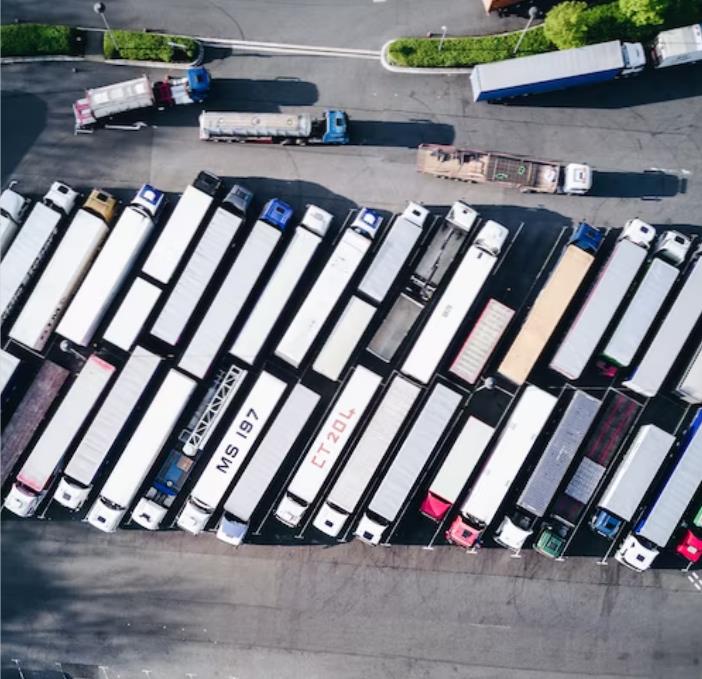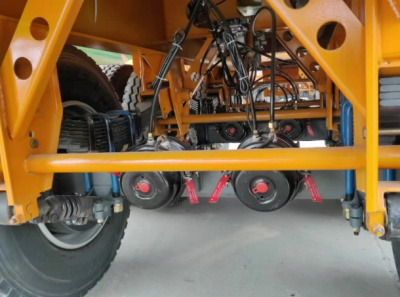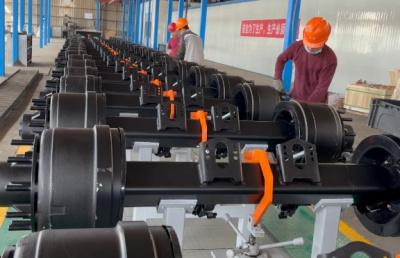Full trailer, semi-trailer, middle axle trailer can not be distinguished?
"Semi-trailer", "full trailer", "middle axle trailer", what is the difference between them? How to tell the difference? Next, we will introduce these three types of trailers separately.
The semitrailer needs to rely on legs to achieve balance after it is released from the tractor
A semi-trailer is a trailer that is pulled by a semi-trailer tractor and bears part of its weight. Similar to two people carrying a piece of wood, the front person is the front, the back is the semi-trailer, all have to bear the weight of the wood.

There are many types of semi-trailers, most of which trailer axle appear in the form of special vehicles, such as ordinary railings, silo semi-hangers, coal semi-hangers, self-discharging semi-hangers, low plate semi-hangers, container plate semi-hangers, special semi-hangers, etc.
Its main advantages are large one-way load capacity, good high-speed stability, easy to match the main hanger, and low driving difficulty (mainly reversing).
Speaking of semi-trailers, here incidentally mention the "dump". "Hanging", as the name suggests, is that the tractor towed the trailer to the destination, and then changed the new trailer to another place. In fact, the suspension transport is not the patent of the semi-trailer, the full trailer and the middle axle trailer can be used. This not only reduces the time of traction waiting for loading and unloading of goods, but also realizes the continuous operation of the vehicle.
"Hang" this mode of transport has been very common in foreign countries, at present, China's large logistics companies, such as Deppon Logistics, China Railway Logistics, etc., have adopted this mode of transport.
The full trailer can be balanced independently after disengaging from the tractor
The trailer is fully loaded by itself, and is connected with the front only by hooks. The front only provides power to help the trailer overcome friction on the road. Full trailers can stand upright on their own tires, while semi-trailers must be supported by their front legs when standing up. The full trailer only bears the horizontal action from the trailer, and does not need to bear the vertical weight of the full trailer.
advantage
Because the traction bar or traction frame of the full trailer can swing trailer axle up and down, and can swing left and right compared to the body, the full trailer has advantages in uneven mountainous areas or on rugged roads.
shortcoming
Mainly, the stability of the full trailer is poor when driving at high speed, and it is easy to have fatal hidden dangers such as braking and tail throwing, and it will also break due to the traction frame, resulting in major traffic accidents.
The middle axle trailer needs legs to maintain balance after towing
The most popular understanding is that the axle is placed in the middle of the trailer. For example, a trailer has two axles, and the two axles are placed in the middle of the trailer to form a mid-axle trailer. Because both axles are located in the middle, the mid-axle trailer cannot balance alone and requires legs to "stand" when connecting to other vehicles.
Because the axle of the middle axle trailer is located in the middle, it has to bear part of the weight of the trailer, but this proportion is generally not too large, and the main weight is still on the middle axle.
advantage
Compared with other trailers, the middle axle trailer has the advantages of low center of gravity, light weight, simple structure and so on.
However, because it is only suitable for high-grade highways, it is more suitable for freight special line logistics users. In addition, the force of the middle axle trailer is relatively stable, the force is also relatively simple, suitable for lightweight materials and lightweight design, in order to obtain greater benefits.

Due to their different structures, semi-trailer, full trailer and mid-axle trailer each have their own advantages and disadvantages in different dimensions, and the three use their own advantages to play a role in their respective fields.







